 Let’s admit it, our middle management needs a radical makeover, a new fitness regime to make us far more innovation fit.
Let’s admit it, our middle management needs a radical makeover, a new fitness regime to make us far more innovation fit.Continue reading “Redesigning the organizations middle for a new innovation shape.”
Innovating in the Age of Ecosystems
Ideas and concepts that inspire and frame Ecosystem thinking and design
 Let’s admit it, our middle management needs a radical makeover, a new fitness regime to make us far more innovation fit.
Let’s admit it, our middle management needs a radical makeover, a new fitness regime to make us far more innovation fit.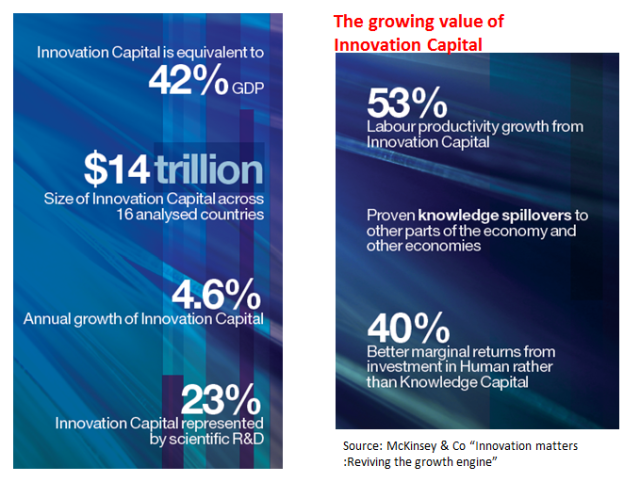 Recognizing the value of our innovation-related assets is where the smart money should go, and then we need to invest in innovation capital. To gain growth and improve productivity is through innovation. We need to translate knowledge into new values.
Recognizing the value of our innovation-related assets is where the smart money should go, and then we need to invest in innovation capital. To gain growth and improve productivity is through innovation. We need to translate knowledge into new values.
When you pause and consider the make-up of Innovation Capital you realize it makes such an economic contribution and in a report from McKinsey & Co, they have set about identifying this to produce the above summary, covering 16 countries, to understand the real value of this Innovation Capital.
These numbers are big and still don’t fully capture everything associated with innovation as much remains ‘hidden’ or ‘attached’ to other activities as well.
We need to shift our thinking on what makes up Innovation Capital
Continue reading “Place Your Future Bets – Invest In Innovation Capital”
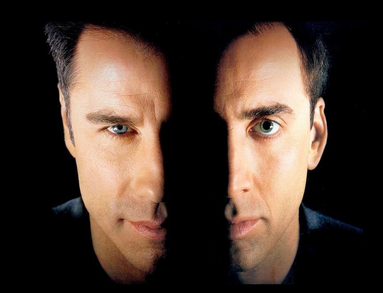
Often innovation succeeds or fails by the personal involvement and engagement of a ‘selected’ few- they make it happen as they are the heavyweights that have the final say.
We all need to recognize the type of innovative leadership personality within our organization, the ones we are working for, as this might help you manage the innovation work a whole lot better and attract the resources you need.
So can you recognize the traits of your innovation leader?
Are they front-end or back-end innovation leaders? Here’s how you can begin to spot the difference.
Continue reading “Recognizing your type of innovation leader”
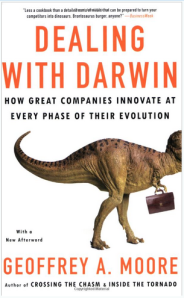 The future within our engagements will determine diffusion and adoption- part three
The future within our engagements will determine diffusion and adoption- part three
One of my favorite books is “Dealing with Darwin– how great companies innovate at every phase of their evolution” written by Geoffrey Moore. It is well worth a read.
When you work through his other books and connect thinking of “Crossing the Chasm” and “Inside the Tornado” you really appreciate the learning stories coming out of Roger Moore’s studies of the Technology Adoption Life-Cycle.
We all need to rethink a lot as the new challenges come rushing towards us.
In his work, Geoffrey Moore talks about ‘traction’ and I think this is a great word for thinking about how to gain diffusion and adoption in product, service or business models, to gain market and customer acceptance.
Continue reading “Exploring Diffusion and Adoption for Innovation – Part 3”
 The future within our engagements will determine diffusion and adoption
The future within our engagements will determine diffusion and adoption
It is all about letting go but also grabbing more at the same time, and then finding ‘it’.
Technology has opened up the door to both scale and fragmentation and social business is the one pushing through this open door.
We are increasingly facing the Collaborative Economy everywhere we turn. Social business is becoming the denominator of success or failure.
We are needing to confront the new questions that are emerging
New rules are emerging – you could say new theories – and where are these fitting within the corporate mindset?
Continue reading “Exploring Diffusion and Adoption of Innovation – Part 2”
 There is no question the Stage-Gate process has had a significant impact on the conception, development and launch of new products.
There is no question the Stage-Gate process has had a significant impact on the conception, development and launch of new products.
Yet there have been consistent criticisms of it, as the world of innovation has moved on. Today it is faster-paced, far more competitive and global and become less predictable.
The cries of the Stage-Gate process as being too linear, too rigid and far too planned, bordering on prescriptive have often been heard. The gates are too structured and the constant ‘creep’ of the controlling bureaucracy surrounding it in paperwork, checklists and justification has simply led to so much non-value-added work added to the moans and groans.
Surprisingly, the Stage-Gate concept was created in the 1980’s and led to Robert G Cooper’s different evolutions of this evolving and absorbing many new practices and experiences gained by different organizations across this time. Continue reading “Opening up the Stage-Gates to let the new innovating world in?”
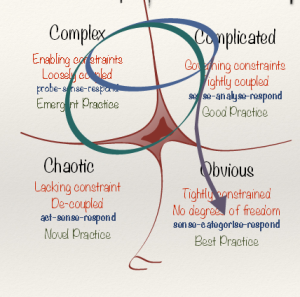
Firstly a very brief explanation of the Cynefin Model and why I find it highly valuable for innovation management.
Innovation has many characteristics of a complex adaptive system as I have crudely attempted to explain here.
The three primary states within the Cynefin framework are Ordered Systems (including Obvious and Complicated), Complexity and Chaos.
Order is split into two, as this handles a key difference in human knowledge between those states, where the cause and effect relationship is obvious and those where it requires greater analysis or expertise.
Exploring a process of emergent discovery for innovation
Most innovators are working in and certainly are far more familiar with the ordered domains, for ‘obvious’ innovations that extend, enhance or evolve their existing products and services.
Equally, they understand their more specialised place and contribution to be growing in their comfort, in the part they play in the more ‘complicated’ domain, where expertise, dedicated focus and specialization are often required or called upon.
Continue reading “The Use of the Cynefin Model for Innovation Management”
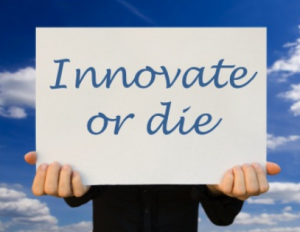 The balance between risk mitigation and being equipped for risk readiness is still an ongoing struggle to balance for most organizations in their innovation activities.
The balance between risk mitigation and being equipped for risk readiness is still an ongoing struggle to balance for most organizations in their innovation activities.
There is still a continued reluctance for exploring new radical innovation opportunities and although organizations ‘talk’ growth, they continue to struggle in achieving it through new innovation.
The incremental commitments to innovation still rule the day to move growth along. Until new sustaining confidence returns to our economies, risk mitigation dominates as markets continue to be more volatile and unreliable in predictive data and executive sentiment remains cautious.
Our organizations are looking for a higher certainty of return and seek sometimes endless validation and justification before they commit, even to small incremental changes. It is no wonder incremental innovation dominates in our innovation decisions; it is where reality sits for many. Are we heading off in a bad innovation direction?
Continue reading “Are our organizations ossifying their innovation or simply have no clue?”
 One of those defining extracts I came across many years back, as it is one that has shaped much of where I believe innovation needed to go, let alone where I believe it still does.
One of those defining extracts I came across many years back, as it is one that has shaped much of where I believe innovation needed to go, let alone where I believe it still does.
It is a pathway I want to continue to travel along and will constantly try to encourage others to equally take the walk.
I was working through a set of presentation files today and came across this extract again and thought I must share this. It rings true as much as it did those years back.
“Strategy is useless without innovation; innovation is directionless without strategy”.
Continue reading “The Ability to Move Innovation from the Existing to the Preferred”
 This week I tuned into the Pipeline virtual conference for product development practitioners and gained an encouraging feeling that innovation is progressing along nicely.
This week I tuned into the Pipeline virtual conference for product development practitioners and gained an encouraging feeling that innovation is progressing along nicely.
Packed all within a day there was plenty of material ‘fodder’ to feed off of and learn from.
A really good conference but what quickly followed was a strong dose of that withering on the innovation vine.
I read two consulting surveys on innovation
I’ve been suddenly pulled out of my virtual bubble back into the harsh realities of where innovation really is. Just simply how innovation is struggling and that lies far more at the top of our organizations than below, those below who are simply trying to ‘get on with the job’ but with at least one hand (or even two) tied behind their backs.
I have been reading two sets of observations, one from Fahrenheit 212, the other from Innosight and my mood began to change. I’m suddenly back in reality where we have this huge gap between those ‘working’ innovation and those at the top simply not engaging with innovation or still failing to understand it or even failing to connect the dots.
Continue reading “I wonder who is withering on the innovation vine?”